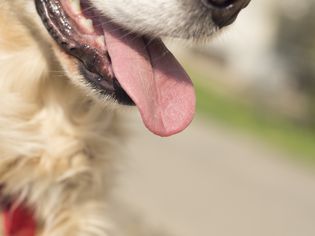Anemia is an indicator of compromised health in a dog. It has a variety of causes, from trauma-related blood loss to immune-mediated diseases like infection or cancer, and treatment is based on specific causes. Though severe anemia is life-threatening and requires immediate veterinary attention, mild cases can be easier to reverse or manage. Pale gums, lethargy, or weight loss may all indicate anemia and should be investigated by a veterinarian to determine the cause and course of treatment.
What Is Anemia?
Anemia refers to a condition in which a dog's blood has low red cells and/or hemoglobin, a component of blood that delivers oxygen to the cells and tissues of the body. It is not a specific disease but the result of a disease process or blood loss.
Symptoms of Anemia in Dogs
A dog's symptoms of anemia may be subtle at first, mimicking fatigue from exercise or just having an "off" day, but they will get progressively worse over several weeks.
Anemia symptoms reflect a lack of oxygen in a dog's blood, indicating that the dog is not capable of performing normal daily activities due to tiredness. While appetite loss and sluggishness can accompany other problems, they are often indicative of anemia. Combined with the appearance of pale skin and gums, the more vague symptoms of anemia are important initial clues in the diagnostic process.
Causes
Red blood cells are produced by the bone marrow and then released into a dog's circulatory system. As the red blood cells age or become damaged, they are removed from the bloodstream and get recycled to form new red blood cells. The number of circulating red blood cells may drop for any of the following reasons:
- Sudden (acute) blood loss: This occurs when there is a severe loss of blood internally or externally usually due to a severe injury, surgery, or bleeding disorder.
- Immune-mediated disease: A condition in which the body’s immune system attacks its red blood cells.
- Reactions to medications: Some dogs can react to medications, such as non-steroidal anti-inflammatory drugs (NSAIDs). These can cause gastrointestinal bleeding or ulcers in certain dogs which could result in anemia.
- Flea and parasite infestations: Ticks and fleas can contribute to blood loss in animals. The resulting loss of red blood cells can result in anemia, especially in puppies and smaller dogs.
- Exposure to toxins: Accidental consumption or inhalation of chemicals and poisons, such as zinc or rat bait, can lead to anemia as it spreads through a dog’s bloodstream and affects their red blood cells or ability to clot.
- Non-infectious (chronic) diseases: Dogs with illnesses such as chronic liver or kidney disease, hypothyroidism, Cushing's disease, and cancer may also be at risk of becoming anemic.
- Infectious diseases: Bacterial infections, tick-borne diseases, and infectious diseases such as Babesiosis can also affect red blood cells and cause anemia.
- Nutrition and hormonal imbalances
Diagnosing Anemia in Dogs
Your vet will examine your dog and perform tests to form a diagnosis. These will most likely include a complete blood count (CBC), tests for parasites, evaluations of liver, kidney, and pancreatic functions, electrolyte tests to check for dehydration, a urinalysis to check for urinary tract infections, X-rays or ultrasound to look for internal bleeding, and other tests to rule out certain causes.
Once anemia is confirmed, then the process of finding the cause begins. This may involve X-rays, liver enzyme tests, endoscopy to evaluate the condition of the gastrointestinal tract, urinalysis, and fecal analysis to check for sources of bleeding.
Treatment
Treatment for anemia in dogs depends on the cause of the condition. Many causes of anemia can be treated, managed, or cured with the help of your veterinarian.
Treatment goals for dogs with anemia are to control bleeding, restore blood volume, find and resolve underlying causes of chronic blood loss, and provide supportive care.
Prognosis for Dogs with Anemia
The prognosis for a dog with anemia depends on the cause of the condition, which may be minor and easily remedied, or serious and potentially life-threatening.
How to Prevent Anemia
Certain causes of anemia can be prevented with measures such as flea and tick management, accident and trauma prevention, keeping toxins like rat poison and human medications (like ibuprofen and acetaminophen) away from your dog, and scheduling regular veterinary wellness checks.
Preventative care is just as important for pets as it is for their owners. Often, dogs will not show symptoms of a health issue, but a veterinarian can help detect and sometimes prevent disease and other life-threatening conditions during regular exams.








